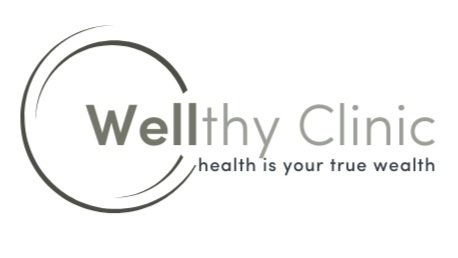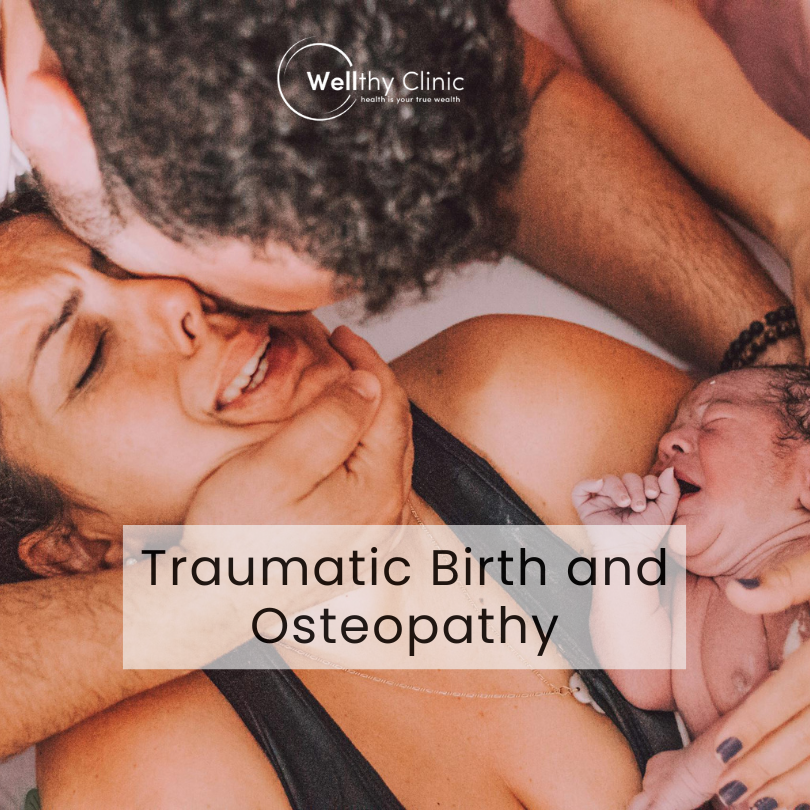Traumatic Birth and Osteopathy
Traumatic and Assisted Birth: How Osteopathy Can Help Your Baby and You Recover
The birth journey is miraculous, yet it can come with unexpected challenges for many families. Traumatic and assisted births, including interventions such as ventouse (vacuum) or forceps deliveries, may be necessary to protect the well-being of mother and baby. However, while often lifesaving, these procedures can sometimes leave physical and emotional imprints on both parties.
While babies are resilient but not immune to the biomechanical forces involved in delivery, likewise, mothers may carry the postural, muscular and emotional effects of a challenging birth experience. Paediatric osteopathy offers a gentle and holistic path to healing.
What is an Assisted Birth?
The second stage of labour - the pushing stage — is when your baby moves down the birth canal and is born. Ideally, this process unfolds with the synchronised efforts of mother and baby. However, if labour slows or doesn’t progress, or the baby becomes stuck due to positioning or maternal fatigue, an obstetrician may recommend assistance.
Which may involve:
Ventouse delivery, where a small suction cup is attached to the baby's head to help guide them out
Forceps delivery, which uses curved metal instruments to grasp and assist the baby's head
These procedures reduce risk in time-critical situations but involve additional mechanical forces that may strain the baby's delicate system (Mills, 2002).
Cranial Moulding and Birth Strain
A baby's skull bones naturally overlap and mould to navigate the birth canal during birth, which is a regular and temporary adaptation. However, when instruments are used, it typically indicates the baby was not progressing smoothly, and their head may have reached the limits of natural moulding. Using forceps or ventouse introduces additional, unnatural traction and rotational forces, which may leave lingering effects on the cranial bones, neck, and soft tissues (Hayden and Mullinger, 2006).
In a ventouse birth, the vacuum cup is placed over the cranium, and a light suction is applied to aid traction. Although generally safe, this can leave a temporary swelling or bruising, and in some cases, the applied force may lead to minor compressive strain.
Forceps, on the other hand, can apply more substantial traction and rotation. These instruments grasp the sides of the baby's head, offering more control during delivery but potentially placing asymmetrical pressure on the skull and facial nerves.
While many babies recover quickly, some may exhibit signs of lingering tension, such as:
Persistent crying or irritability
Breastfeeding and Cranial Osteopathy difficulties
Poor sleep or restlessness
Favouring one side or having difficulty turning the head
Facial asymmetry or drooping due to nerve pressure
In such cases, paediatric osteopathy may offer significant support.
How Osteopathy Can Help Babies After Assisted Birth
Osteopathy is a manual therapy focusing on the body's structure and function. In newborns, paediatric osteopaths use gentle, refined techniques to assess and release physical strain, restore comfort, and support the baby's natural self-regulating ability.
Osteopaths trained in cranial and paediatric techniques are particularly skilled in detecting subtle imbalances in the head, spine, and diaphragm — even when symptoms are mild or not visible. For example, a baby who is unsettled unless held upright or struggles to latch might be experiencing tension in the neck, jaw, or cranial membranes from birth strain.
Common goals of osteopathic treatment for babies include:
Reducing irritability and digestive discomfort
Improving latching, sucking, and feeding
Supporting healthy head shape development
Relieving neck or jaw tension
Enhancing relaxation and sleep quality
Osteopathy aims not to "fix" the baby but to gently support the body in unwinding stress patterns caused by birth — allowing better nervous system regulation, digestion, and comfort (Beider and Moyer, 2007).
How Osteopathy Can Help Mothers Recover from Traumatic Birth
Birth is also deeply impactful for mothers. A traumatic or assisted birth may leave behind:
Pelvic or low back pain
Neck and shoulder strain from pushing or breastfeeding posture
C-section scarring and adhesions
A sense of emotional disconnection or trauma
Postnatal osteopathy addresses these through:
Pelvic realignment and spinal mobilisation
Gentle fascial release to address scarring and adhesions
Diaphragmatic and ribcage release to improve breathing
Cranial or visceral techniques to calm the nervous system
Osteopathic treatment provides physical and emotional support, helping mothers feel more comfortable in their bodies, reconnect with themselves, and regain confidence during postpartum recovery (Cerritelli et al., 2020).
Is the Strain Visible?
Often, the effects of assisted birth are not outwardly visible, but they may present as patterns of discomfort. For example:
A baby who cannot settle unless held upright may have tension in the diaphragm or ribcage
One eye appearing puffier or weepier than the other may indicate cranial strain
Difficulty latching or sustaining a feed may be due to tension in the jaw or cranial nerves
Facial asymmetry when crying may be a sign of temporary facial nerve involvement
Paediatric osteopaths take a comprehensive birth and feeding history and a gentle, hands-on examination to assess for any restrictions affecting function.
A Gentle, Natural Recovery
Thankfully, many babies and mothers recover beautifully from assisted or traumatic births with the proper support — including skin-to-skin contact, responsive feeding, and nurturing. However, osteopathy may help resolve the underlying strain contributing to feeding issues, poor sleep, or general unsettledness if difficulties persist.
Osteopathy is not a replacement for medical care but a complementary approach. It often works alongside GPs, midwives, and lactation consultants to support the family's journey.
Final Thoughts
Birth is transformative — but not always straightforward. If you or your baby experienced a difficult or assisted birth, it's normal to have questions, concerns, or a sense that something just "isn't quite right."
Paediatric osteopathy offers gentle, hands-on support to ease the lingering effects of birth. Whether helping your baby find more comfort in their body or supporting your recovery from pain and strain, osteopathy works with your body's innate intelligence to restore balance and ease.
If you're unsure whether osteopathy is right for your situation, speak with a registered osteopath experienced in paediatrics to understand what support might help your family thrive.
Frequently Asked Questions:
Can osteopathy help with trauma? Yes, osteopathy can support recovery from physical and emotional trauma by releasing tension patterns in the body and calming the nervous system. It is particularly helpful after birth trauma for both mothers and babies.
Can osteopathy help newborns? Yes, paediatric osteopaths use gentle techniques to help newborns recover from birth-related strains, which may improve feeding, sleep, and overall comfort.
When should I see an osteopath after giving birth? You can see an osteopath as soon as you feel ready, even within the first few weeks postpartum, especially if you're experiencing pain, discomfort, or issues with recovery.
Why would a newborn need an osteopath? A newborn might benefit from osteopathy if they had a difficult or assisted birth and show signs like feeding difficulties, excessive crying, or favouring one side.
What does a paediatric osteopath do? They gently assess and treat areas of tension or asymmetry in a baby’s body, supporting the baby’s comfort, digestion, feeding and sleep through hands-on therapy.
Can osteopathy help the nervous system? Yes, especially cranial osteopathy, which can help regulate the autonomic nervous system and support calming, digestion, and sleep.
Can osteopathy help with head shape? Yes, osteopaths can support babies with head asymmetries (like flat head syndrome) by gently releasing restrictions that may contribute to uneven pressures on the skull.
Matthew Glithero DPO
A paediatric Osteopath specialist who is passionate about supporting babies, mothers and the whole family recover from traumatic births.
References
Beck, C. T. (2004) 'Birth trauma: in the eye of the beholder', Nursing Research, 53(1), pp. 28–35.
Beider, S. and Moyer, C. A. (2007) 'Randomised controlled trials of pediatric massage: a review', Evidence-Based Complementary and Alternative Medicine, 4(1), pp. 23–34.
Cerritelli, F., Lacorte, E., Ruffini, N., Vanacore, N. (2020) 'Osteopathic manipulative treatment in gynecology and obstetrics: a systematic review', PLOS One, 15(4), e0231203.
Hayden, C. and Mullinger, B. (2006) A Textbook of Paediatric Osteopathy. Edinburgh: Churchill Livingstone.
Mills, M. V. (2002) 'Cranial osteopathy and babies', Clinical Child Psychology and Psychiatry, 7(3), pp. 401–411.



